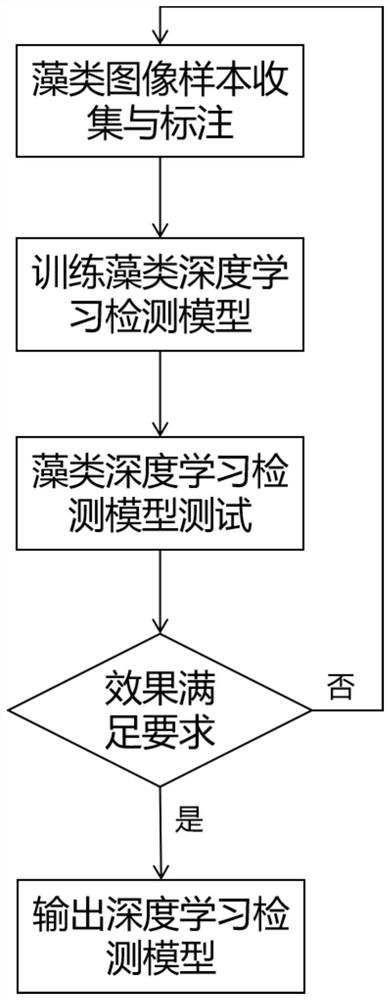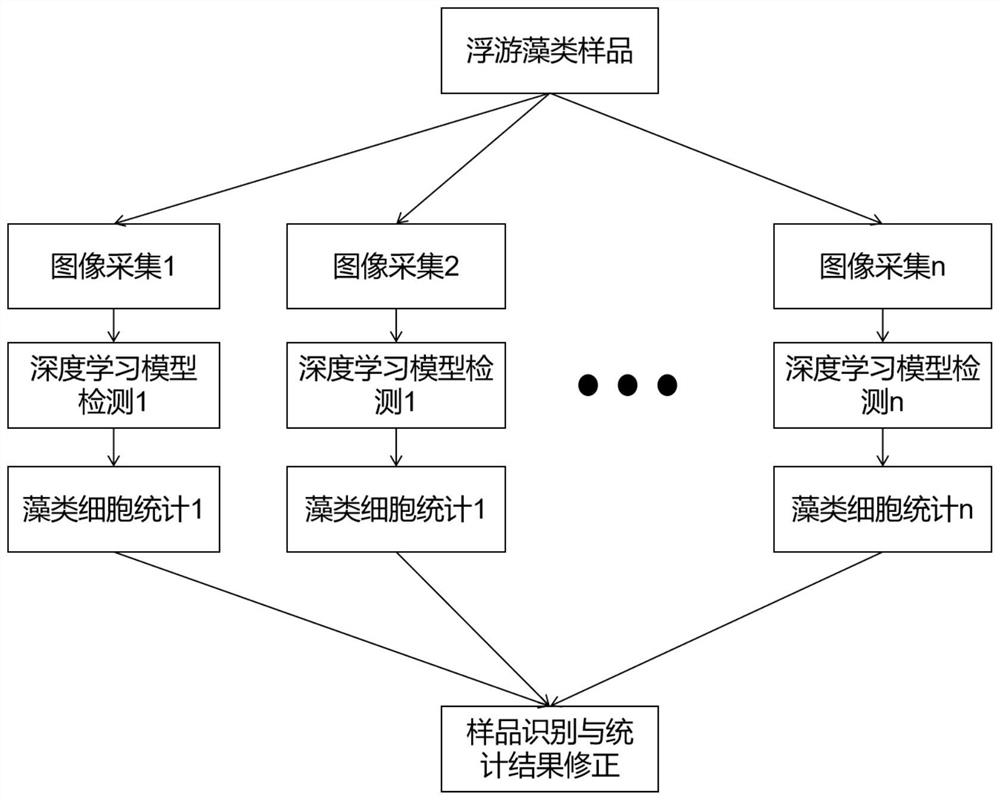Cascade algae cell statistical method based on microscope image
A technology of algae cells and statistical methods, which is applied in the field of cascading algae cell statistics based on microscope images, can solve the problems of no way to mark internal cells, affect statistical results, and difficult manual labeling of cells, so as to reduce data labeling work and improve Recognition effect, effect of improving recognition efficiency
- Summary
- Abstract
- Description
- Claims
- Application Information
AI Technical Summary
Problems solved by technology
Method used
Image
Examples
Embodiment 1
[0048] Further, the method for cascading algae cell statistics based on microscope images provided by the invention comprises the following steps:
[0049] S1. Collect and label algae image sample data under 400X microscope conditions;
[0050] S2. Training algae deep learning detection model;
[0051] S3. Algae cell identification and statistics based on the cascade architecture: call the corresponding cascade statistical algorithm according to the identified algae species, and calculate the number of algae cells;
[0052] S4. Correct the identification result of the previous step according to the characteristics of the algae species: according to the number of cells calculated by the cascade statistical algorithm, combined with the distribution of the species of algae in the image, the identification result is corrected.
[0053] refer to figure 2 , the algae deep learning detection model training process includes the following:
[0054](1) Single-celled algae are marked...
PUM
 Login to view more
Login to view more Abstract
Description
Claims
Application Information
 Login to view more
Login to view more - R&D Engineer
- R&D Manager
- IP Professional
- Industry Leading Data Capabilities
- Powerful AI technology
- Patent DNA Extraction
Browse by: Latest US Patents, China's latest patents, Technical Efficacy Thesaurus, Application Domain, Technology Topic.
© 2024 PatSnap. All rights reserved.Legal|Privacy policy|Modern Slavery Act Transparency Statement|Sitemap



